With immense sadness, we must share the news of our dear Shukuru’s passing. For 12 years, she lived with the mysterious health issues that plagued her. On Monday, 29th November 2021, her journey came to a peaceful end. We feared this day was coming for quite some time, but Shukuru’s death still leaves an enormous hole in our hearts.
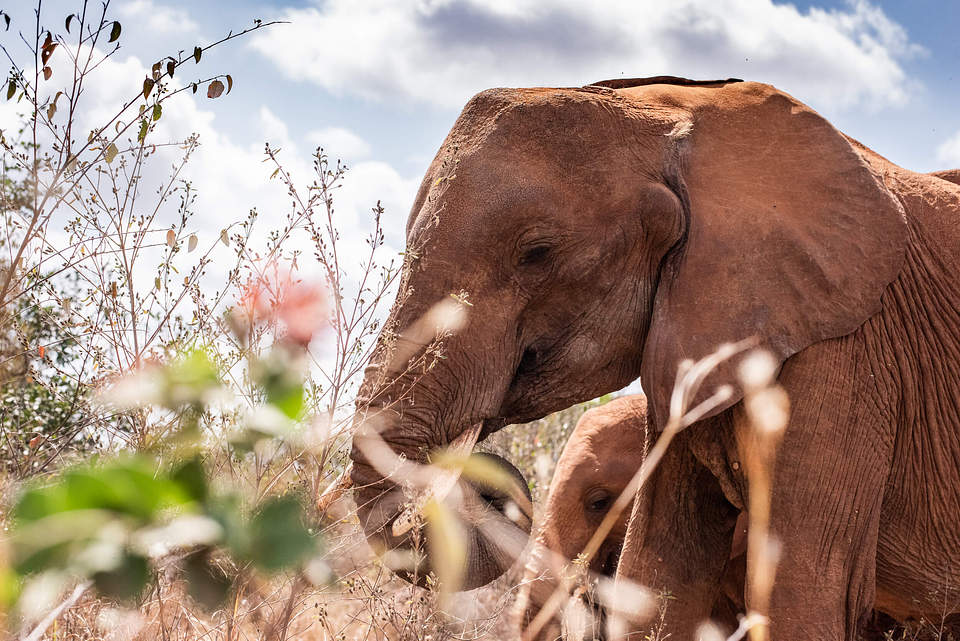
Shukuru’s full name is “Nashukuru,” which means “I am grateful” in Swahili. While we wish more than anything that her story had ended differently, we can only be grateful that her time on earth was marked by love and contentment. Shukuru loved her human-elephant family deeply. Even during the greatest dips in her health, she remained tranquil, despite whatever inner turmoil caused her ailments.
Shukuru’s name also has a poignant connection to her rescue story, which unfolded in September 2009. She was just days old when she fell down a manhole along the Mzima-Mombasa Pipeline. A passing herdsman heard her cries and, with the help of some passersby, managed to extract her. The other so-called rescuers were determined to kill the tiny calf for bushmeat, but the herdsman intervened and sheltered her in his home while we organised a rescue. It is because of his bravery that Shukuru survived that day.
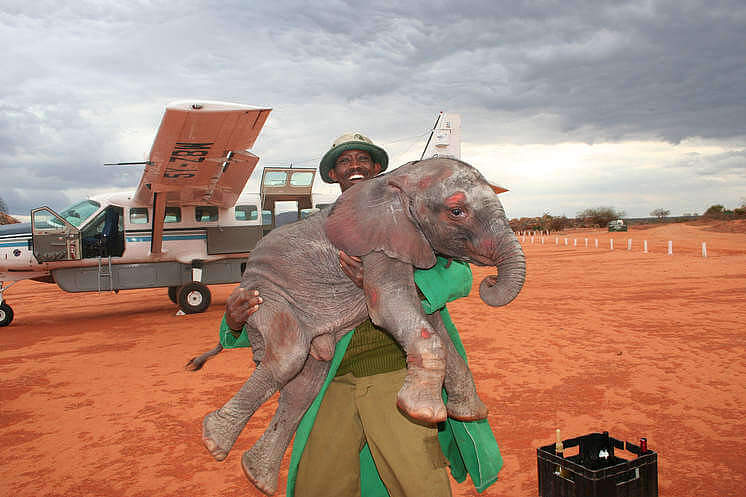
Tiny Shukuru at the time of her rescue
In 2013, Shukuru graduated to our Ithumba Reintegration Unit, but this move proved to be short-lived. She never thrived in Tsavo, and her health issues only became more apparent as she grew older. We made the decision to bring her back to our Nairobi Nursery, where she could be closely monitored by a team of vets and cosseted by the Keepers.
After six months convalescing at the Nursery, however, Shukuru appeared bored by her surroundings. An elephant’s emotional state and physical health are inextricably linked, and we knew it was vital that she be in a place where she felt happy. And so, in July 2018, we moved her to Umani Springs, where she could expand her horizons and enjoy the company of her peers, both which she so clearly craved.
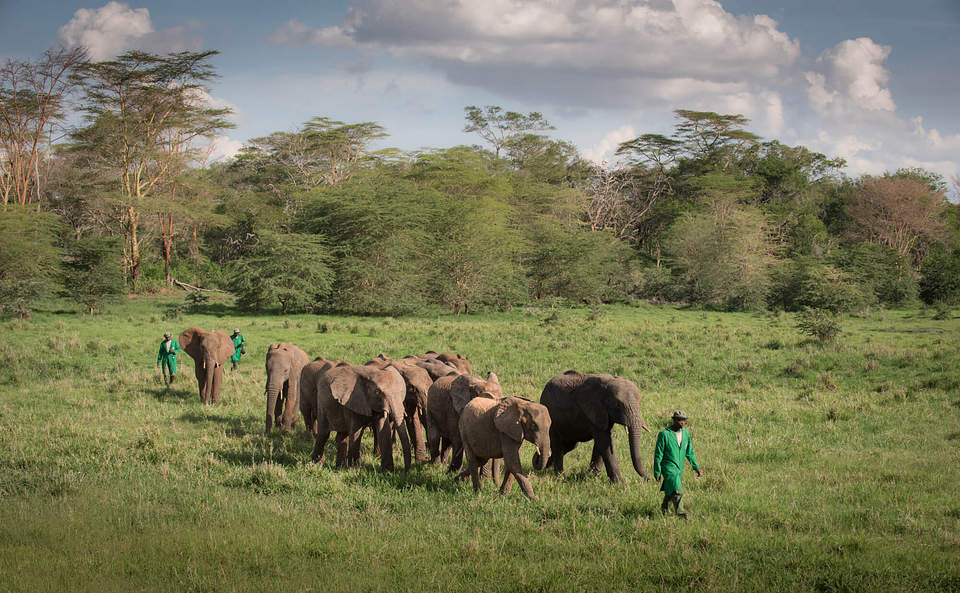
Shukuru always liked to lead the herd at Umani
For several years, Umani Springs was a wonderful sanctuary for Shukuru. She never thrived — unfortunately, thriving never seemed to be Shukuru’s destiny — but she certainly seemed content. Earlier this year, however, we noticed a marked change. While the other orphans continued to grow in size and stature, Shukuru never caught up. This was undoubtedly a symptom of her health ailments, and as a result, she was always remarkably small and frail for her age. Perhaps aware of her vulnerability around increasingly large elephants, she began isolating herself from the rest of the Umani herd, making herself scarce during the mud bath and drifting off for solo browsing sessions. It was clear that Shukuru no longer felt at home in Umani Springs.
And so, in May of this year, we brought Shukuru to the Nursery for a third time. Unlike her previous stint in Nairobi, she seemed completely at ease this time around. While Shukuru was never an effusive elephant, she obviously felt comfortable around the much smaller orphans — and they, in turn, flocked to her! She was constantly surrounded by a coterie of tiny elephants, all of whom gravitated towards her (relatively) large, reassuring presence.
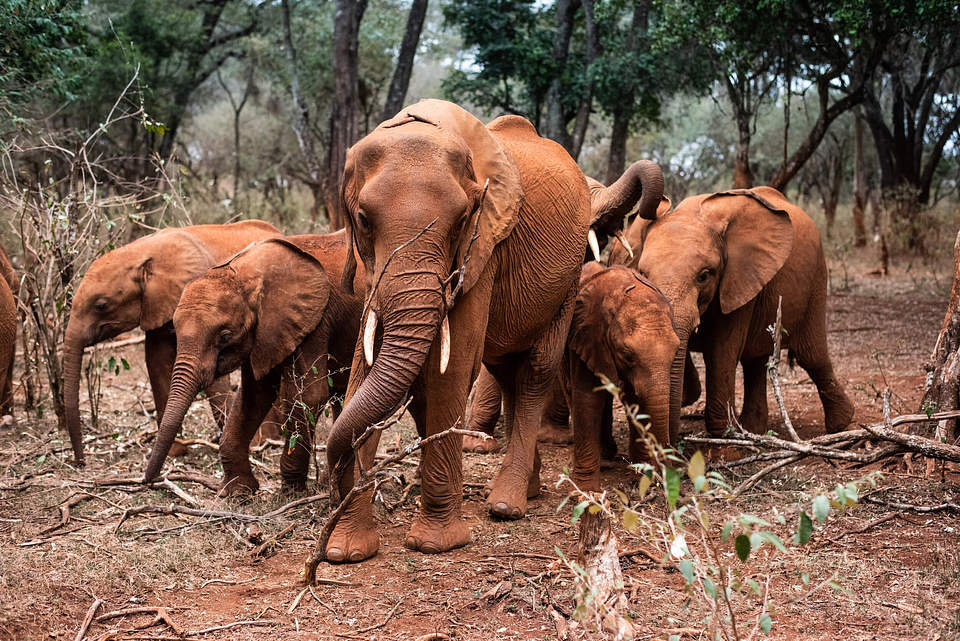
Shukuru was a great favourite among all the Nursery babies
However, we feared that Shukuru’s time was coming to an end. We nursed her to 12 years, but it was a daily struggle. Consultations with vets never brought about the epiphany we so desperately hoped for, while blood work revealed ups and downs with various infections. While she was still a baby at the Nursery, Shukuru also developed a strange lump near her temporal gland on her head. We were left thinking there was a definite, chronic problem, one that was beyond any medical intervention.
Three days before her passing, Shukuru stopped feeding and drinking. We did our absolute best to bring her back from the brink, but it seems that she called it quits on her terms. On Monday afternoon, Shukuru drew her final breath, surrounded by the Keepers who had stood by her side all these years. She never seemed panicked, just resigned that it was the end of the road.
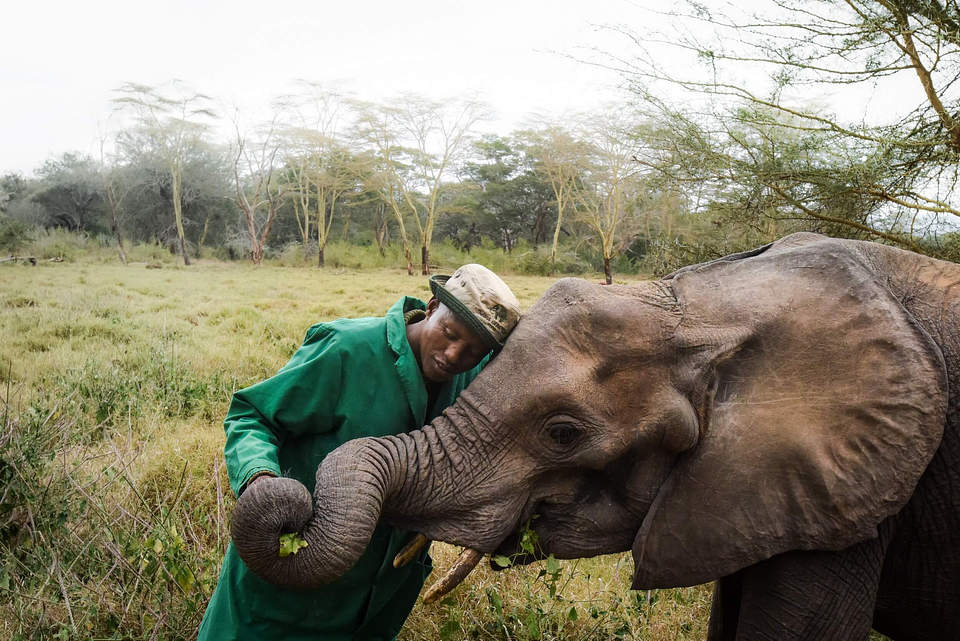
We must be grateful for the time we had with this beautiful elephant
We immediately whisked Shukuru’s body away for a postmortem. That is why we delayed in sharing the news of her death, in the hopes that an autopsy and subsequent histopathology would reveal more about what plagued her. While we still wait for more results, the greatest irregularity was found in her thyroid, which was both deformed and grossly oversized. The vet, who has performed many autopsies on elephants, said she has never seen a thyroid like this. A thyroid issue compromises countless bodily functions, from metabolism to heart to growth, which could account for Shukuru’s poor development over the years. She was also incredibly anemic, despite the iron and catosal injections she regularly received. We are still awaiting more histopathology results, but in short, it seems that Shukuru’s body failed her — and as she grew, it all became increasingly pronounced.
In our heart of hearts, we suspected that Shukuru would never be an old elephant, but that doesn’t make her passing any less devastating. For 12 years, this gentle soul was an intrinsic part of our lives. However, we also recognise that Shukuru’s spirit has finally been released from the body that never supported her. We must be grateful for the time we had with this beautiful elephant — and, tinged with bittersweet regret, we must be grateful that she is free at last.
